by John D. Anderson Jr. is a comprehensive guide exploring the fundamentals of flight, aircraft design, and aerodynamics, perfect for aviation enthusiasts and students.
Overview of the Book
by John D. Anderson Jr. provides a detailed exploration of the principles of aerodynamics, propulsion systems, and aircraft design. The book is structured to cater to both students and aviation enthusiasts, offering a balanced mix of theoretical concepts and practical applications. Anderson’s approach emphasizes the historical development of flight, connecting past innovations to modern advancements. The text is enriched with clear explanations, mathematical derivations, and real-world examples, making it an invaluable resource for understanding the complexities of flight mechanics and their practical implications in aerospace engineering.
Importance of the Topic
Understanding the principles of flight is crucial for advancing aerospace engineering and aviation technology. The study of aerodynamics, propulsion, and aircraft design lays the foundation for innovation in aircraft performance, safety, and efficiency. By exploring these concepts, readers gain insights into the physics of flight, enabling them to contribute to future advancements in aviation and space exploration. This knowledge also fosters a deeper appreciation for the engineering marvels that have shaped modern transportation and global connectivity, inspiring future generations of engineers and researchers.
by John D. Anderson Jr. is a foundational textbook that explores the physics and engineering of flight, serving as a key resource for students and professionals in aerospace.
provides a detailed exploration of the principles and mechanics of flight. The book is designed for both students and professionals, offering a comprehensive understanding of aerodynamics, propulsion systems, and aircraft performance. It covers the fundamentals of flight mechanics, including lift, drag, and thrust, while also delving into the historical development of aviation. Anderson’s clear and engaging writing style makes complex concepts accessible, while the inclusion of equations, diagrams, and real-world examples ensures a deep understanding of the subject. This textbook is widely regarded as a foundational resource in aerospace engineering and aviation studies.
by John D. Anderson Jr. serves as a cornerstone for educating students and professionals about the physics and engineering behind aircraft and spacecraft. The topic’s importance lies in its practical applications, from designing safer and more efficient aircraft to advancing space exploration. By mastering these concepts, engineers can innovate and address global challenges in transportation, defense, and environmental sustainability. Anderson’s work provides a clear and accessible foundation for pursuing careers in these critical fields, making it indispensable for modern aerospace education.
This section introduces foundational concepts such as aerodynamics, propulsion systems, and aircraft design, providing a solid understanding of the physics and engineering behind flight.
Aerodynamics Basics
Aerodynamics is the study of air interaction with moving objects, focusing on forces like lift, weight, thrust, and drag. Anderson explains how airfoil shapes generate lift and how wing designs optimize performance. The principles of Bernoulli’s equation and airflow dynamics are covered, emphasizing their role in flight. The text also explores how factors like airspeed, altitude, and aircraft shape influence aerodynamic efficiency, providing a foundational understanding for analyzing aircraft behavior and performance in various conditions. These concepts are essential for grasping the physics of flight and designing effective aircraft.
Propulsion Systems
Propulsion systems are critical for generating thrust to overcome drag and propel aircraft through the air. Anderson discusses various types, including jet engines and propeller-driven systems. Jet engines rely on high-speed exhaust gases for thrust, while propeller engines use rotating blades to push air backward. Both systems are analyzed in terms of efficiency, power output, and application in different aircraft designs. The text also covers the principles of thrust generation, fuel combustion, and energy conversion, providing a detailed understanding of how propulsion systems enable sustained and controlled flight in modern aviation. These concepts are vital for designing efficient and reliable aircraft propulsion.
Aircraft Design and Performance
Aircraft design and performance are shaped by aerodynamic efficiency, structural integrity, and propulsion systems. Anderson explains how design elements like wing shape, fuselage, and control surfaces influence an aircraft’s capabilities. Performance metrics such as speed, altitude, range, and maneuverability are discussed in detail. The book emphasizes the balance between power, weight, and drag, highlighting how these factors determine an aircraft’s overall efficiency. By understanding these principles, readers gain insights into how design choices optimize performance for specific aviation needs, whether for commercial, military, or recreational purposes. This section is crucial for grasping the practical application of flight mechanics.
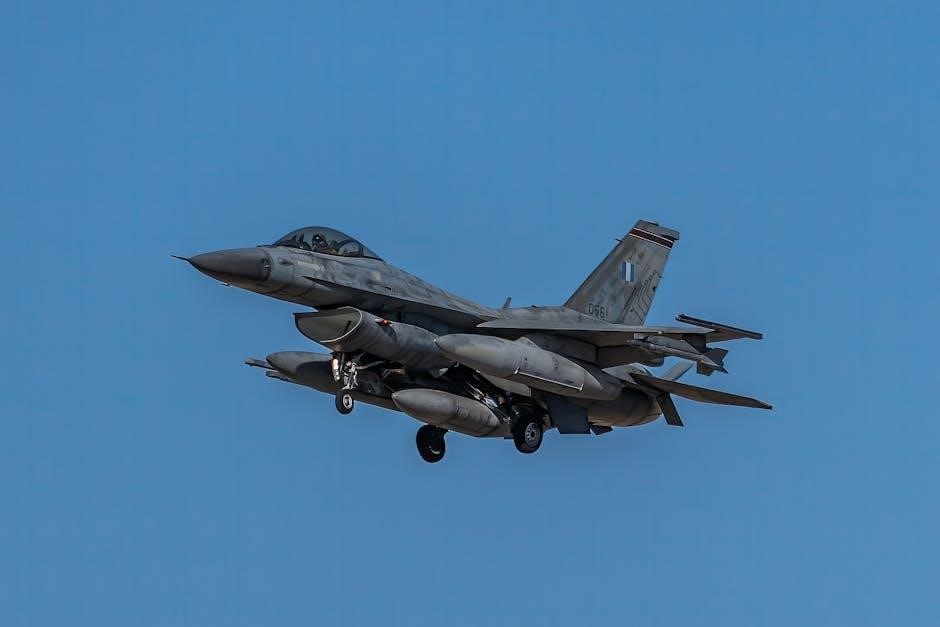
Historical Context of Flight
The historical context of flight traces humanity’s pursuit of aviation, from ancient myths to modern innovations, shaping our understanding of aerodynamics and aircraft development over centuries.
Early Aviation Pioneers
The history of flight is deeply rooted in the contributions of visionary pioneers. Orville and Wilbur Wright famously achieved the first powered, controlled, and sustained flight in 1903. Sir George Cayley is often credited with laying the scientific foundations of aerodynamics in the early 19th century. Otto Lilienthal and Octave Chanute also played pivotal roles, with Lilienthal’s glider experiments and Chanute’s collaborative efforts inspiring later innovators. These trailblazers not only advanced the technical aspects of aviation but also sparked a global fascination with the possibilities of flight, paving the way for modern aerospace engineering.

Evolution of Aircraft Design
Aircraft design has undergone remarkable transformation since the Wright brothers’ first flight. Early designs relied on wood and fabric, evolving to metal structures for durability. The introduction of streamlined shapes and advanced aerodynamic principles improved efficiency. World War II accelerated innovation, leading to jet engines and swept-wing designs. Modern aircraft utilize lightweight composite materials and sophisticated avionics. This evolution reflects continuous improvements in materials, propulsion, and computational design tools, enabling faster, more efficient, and safer flight capabilities. Each era built on previous achievements, shaping the diverse range of aircraft seen today.
Principles of Aerodynamics
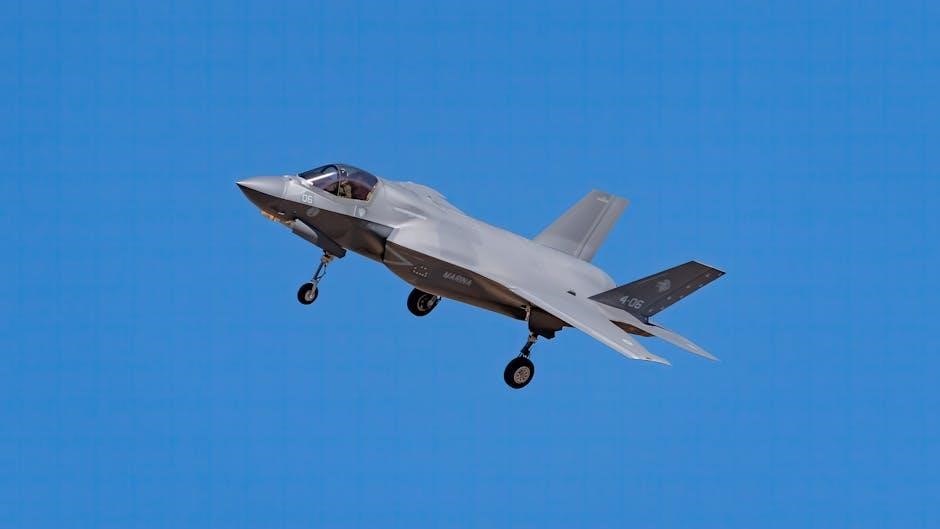
The section explains fundamental aerodynamic principles, including lift, drag, and airflow characteristics, highlighting how wing shapes and Bernoulli’s principle enable aircraft to generate lift and sustain flight.
Lift and Drag
Lift and Drag
Lift and drag are fundamental forces in aerodynamics, shaping aircraft performance. Lift, generated by airfoil shapes, enables flight by overcoming weight, while drag resists motion, affecting speed and efficiency. Bernoulli’s principle explains lift through pressure differences, while drag arises from friction and form. Balancing these forces is critical for aircraft design, influencing climb, cruise, and maneuverability. Understanding lift and drag dynamics is essential for optimizing wing shapes, reducing fuel consumption, and enhancing overall flight capabilities. This section delves into their physics, applications, and impact on aviation engineering, providing a foundation for advanced aerodynamic studies.

Airfoil Shapes
Airfoil Shapes
, Anderson explores how airfoil design evolves with aircraft type, from subsonic wings to supersonic noses, ensuring optimal performance across various flight regimes and applications, making them a cornerstone of aircraft engineering and design.
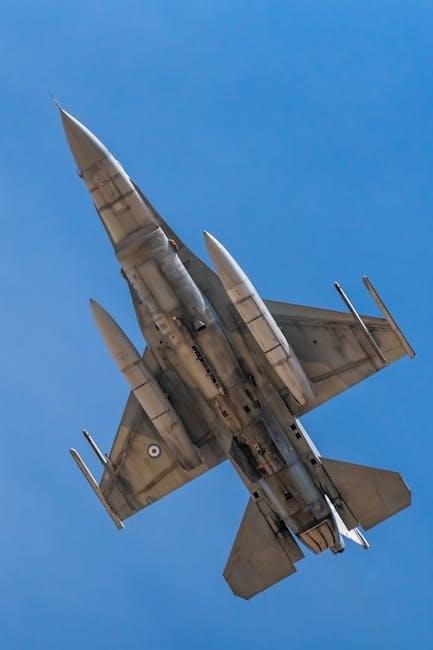
Propulsion Systems
Propulsion systems generate thrust, essential for overcoming drag and powering flight. They include jet engines and propellers, each optimized for efficiency and performance across varying flight regimes.
Jet Engines
Jet engines revolutionized aviation by providing high thrust and efficiency. They operate by drawing in air, compressing it, mixing with fuel, and igniting to produce thrust. Turbojet and turbofan engines dominate modern aircraft due to their superior performance at high speeds and altitudes. Jet engines excel in long-range flights, offering reliability and power. However, they require complex engineering to manage noise, fuel consumption, and emissions. Anderson’s text delves into their thermodynamic principles, design variations, and advancements in reducing environmental impact while maintaining performance.
Propeller Engines
Propeller engines are widely used in smaller aircraft and general aviation due to their simplicity and efficiency at lower speeds. They work by converting engine power into thrust through a spinning propeller, which pushes air backward, generating forward motion. Fixed-pitch and variable-pitch propellers are common, with the latter offering better performance across different flight regimes. While less powerful than jet engines, propeller engines excel in fuel efficiency and cost-effectiveness for short-range flights. Anderson’s text explains their thermodynamic cycles, design trade-offs, and applications in various aircraft, emphasizing their role in aviation history and modern use.
Aircraft Performance
Aircraft performance encompasses speed, altitude, range, and endurance, influenced by thrust, weight, and aerodynamic efficiency. These factors determine an aircraft’s capabilities and operational limits, crucial for mission planning.
Speed and Altitude
Speed and altitude are critical factors in aircraft performance, influencing aerodynamic forces, engine efficiency, and operational capabilities. Speed determines the balance between thrust and drag, while altitude affects air density and engine performance. At higher altitudes, air density decreases, reducing lift and engine thrust. Conversely, lower altitudes offer higher air density, improving engine performance but increasing drag. The relationship between speed and altitude is essential for optimizing flight efficiency, ensuring safe and effective operation across various conditions. Understanding these dynamics is vital for pilots and engineers to maximize aircraft capabilities and meet mission requirements effectively.
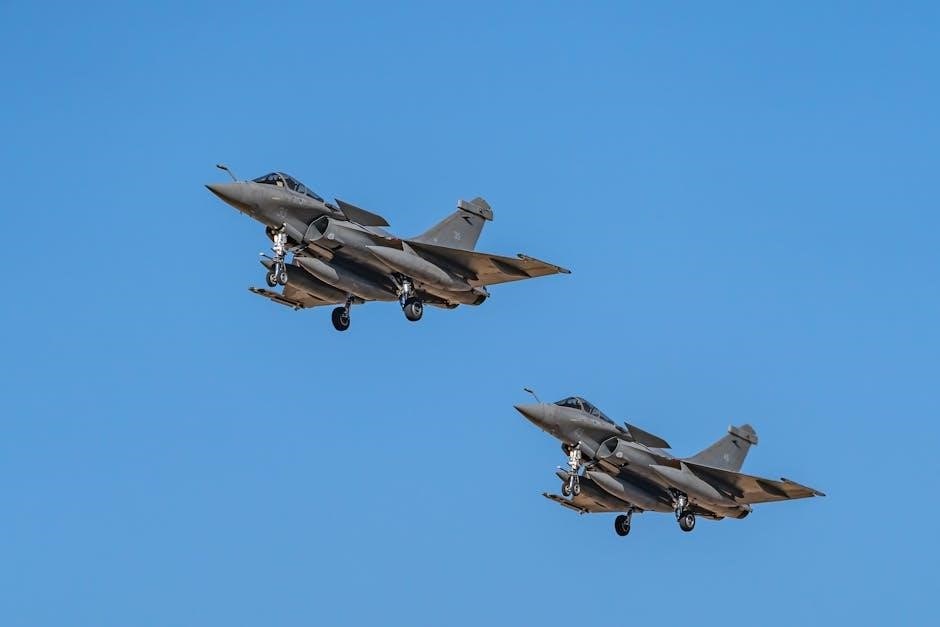
Range and Endurance
Range and endurance are pivotal metrics in aircraft performance, determining how far and how long an aircraft can fly. Range is influenced by fuel capacity, aerodynamic efficiency, and engine performance, while endurance depends on fuel consumption rates and power settings. Higher altitudes often enhance range due to lower drag and more efficient engine operation, but endurance may decrease at higher speeds. Balancing these factors is crucial for mission planning, ensuring aircraft meet operational requirements. Understanding range and endurance is essential for optimizing flight planning and achieving desired performance outcomes in various aviation scenarios.
by John D. Anderson Jr. is a foundational textbook exploring aerospace engineering principles, offering accessible explanations of aerodynamics, propulsion, and aircraft performance for students and enthusiasts.
by John D. Anderson Jr. provides a detailed exploration of aerospace engineering, covering fundamental principles of aerodynamics, propulsion systems, and aircraft performance. The book is designed for both undergraduate students and professionals, offering a comprehensive understanding of flight mechanics. It bridges the gap between theory and practical application, with clear explanations of complex concepts. Anderson’s accessible writing style makes the subject approachable for newcomers while providing depth for advanced learners. The text is supported by illustrations, equations, and historical context, creating a well-rounded resource for studying the science of flight.
provides foundational knowledge essential for designing efficient aircraft and spacecraft. The study of aerodynamics and propulsion systems directly impacts safety, performance, and innovation in air travel. This topic is vital for students and professionals in aerospace fields, offering insights into historical advancements and current challenges. Mastery of these concepts drives progress in aviation, enabling the development of faster, safer, and more efficient aircraft, which are critical to modern transportation and global connectivity.
The book explores aerodynamics, propulsion systems, aircraft design, and performance, providing a solid foundation for understanding the physics and engineering of flight.
Aerodynamics is the study of how air interacts with moving objects, like aircraft. Anderson explores fundamental principles such as lift, drag, and airflow patterns. He explains how wings generate lift through differences in air pressure and how shape and angle influence performance. The role of Bernoulli’s Principle and Newton’s laws in understanding aerodynamic forces is highlighted. The book also delves into the behavior of air at various speeds, from subsonic to supersonic, and discusses the challenges of controlling aircraft in different flight regimes. These concepts form the foundation for designing efficient and stable aircraft.
Anderson discusses various propulsion systems, focusing on their principles and applications. Jet engines, including turbojets and turbofans, are explained in detail, highlighting their operation, efficiency, and thrust generation. The text also covers propeller engines, examining their mechanics, advantages, and limitations. Anderson emphasizes the role of propulsion in aircraft performance, linking engine design to speed, range, and fuel efficiency. Real-world examples and historical developments illustrate the evolution of propulsion technologies, providing a practical understanding of how engines power modern aircraft and influence flight capabilities.
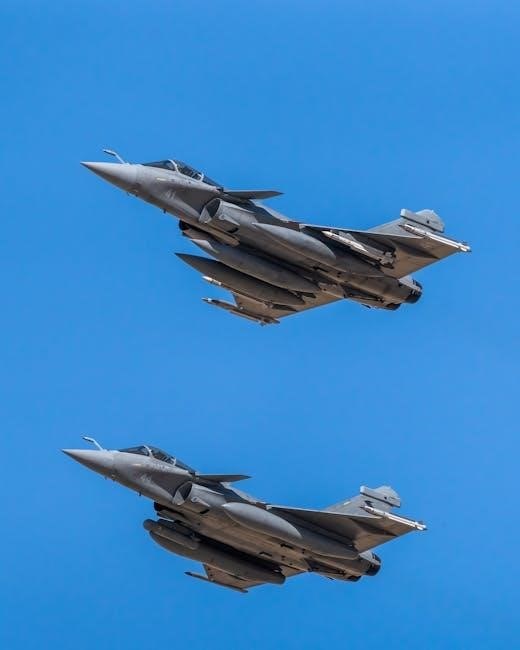
Aircraft design and performance are central to Anderson’s text, focusing on how design elements like wing shape, weight, and thrust impact flight capabilities. The book explores performance metrics such as climb rate, maneuverability, and fuel efficiency, linking them to design choices. Anderson emphasizes the balance between aerodynamic efficiency and structural integrity, illustrating how these factors influence an aircraft’s speed, range, and endurance. Practical examples and equations help readers understand how design decisions affect real-world performance, making the text a valuable resource for both students and professionals in aerospace engineering.

The historical context of flight traces aviation’s journey from early experiments to modern advancements. The Wright Brothers’ pioneering work and the first powered flight marked significant milestones.
The history of flight is deeply rooted in the contributions of visionary pioneers. The Wright Brothers successfully achieved the first powered, controlled, and sustained flight in 1903. Octave Chanute, a mentor to the Wrights, played a crucial role in advancing wing design. Sir George Cayley, often called the “father of aeronautics,” laid foundational theories in the early 19th century. These trailblazers, along with others like Glenn Curtiss and Amelia Earhart, pushed the boundaries of aviation, paving the way for modern aircraft design and the aerospace industry.
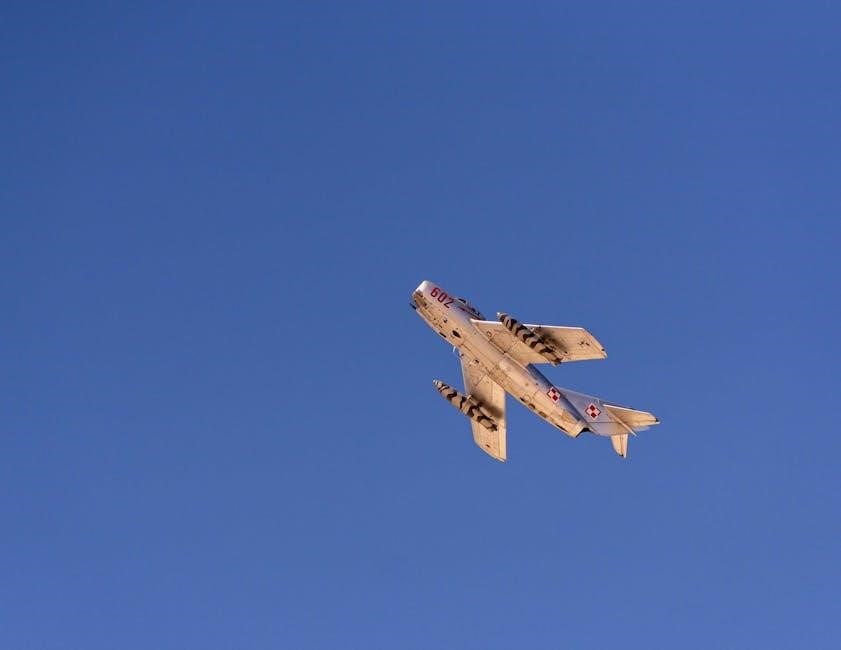
Aircraft design has undergone remarkable transformations, driven by advances in materials, aerodynamics, and propulsion. Early aircraft, like the Wright Flyer, featured simple, fragile structures. World War I and II accelerated innovation, leading to all-metal planes and streamlined shapes. The jet age introduced swept wings and high-bypass engines, enhancing efficiency and speed. Modern designs incorporate composite materials, fly-by-wire systems, and optimized aerodynamics for reduced drag. Computational tools now enable precise modeling, ensuring aircraft meet performance, safety, and environmental requirements. This evolution reflects humanity’s relentless pursuit of flight excellence, blending art and science in aerospace engineering.
Aerodynamics studies the interaction of air with objects in motion, fundamental to flight. It encompasses lift, drag, thrust, and weight, governed by Bernoulli’s principle, ensuring efficient aircraft performance.
Lift and drag are fundamental forces in aerodynamics. Lift is the upward force opposing weight, generated by airfoil shapes and pressure differences. Drag, the resistance to motion, arises from friction and airflow disruption. Balancing these forces ensures efficient flight. Anderson explains how wing design and angle of attack influence lift, while drag depends on shape, size, and velocity. Understanding these principles is crucial for designing aircraft that achieve optimal performance, stability, and fuel efficiency. This section provides a clear, mathematical approach to calculating and optimizing lift and drag in various flight conditions.
Airfoil shapes are critical in aerodynamics, influencing lift and drag. Anderson explains how the curved upper surface and flatter lower surface create pressure differences, generating lift. Symmetric and cambered airfoils are compared, with cambered shapes producing greater lift. The leading edge radius, chord line, and wingtip design also affect performance. Anderson discusses how airfoil thickness and shape optimize for specific flight regimes, such as subsonic or supersonic conditions. The section provides detailed equations and examples, enabling readers to understand and analyze airfoil performance in various applications, from aircraft wings to helicopter rotors and wind turbine blades.
Propulsion systems generate thrust, enabling aircraft to overcome drag and sustain flight. Anderson discusses various types, including jet engines and propeller-driven systems, highlighting their principles and efficiencies.
Jet engines provide thrust by expelling high-speed exhaust gases, leveraging the principle of action and reaction. Anderson explains their operation, highlighting components like compressors, combustion chambers, turbines, and nozzles. Jet engines are highly efficient at high speeds and altitudes, making them ideal for commercial and military aviation. The book discusses turbojet, turbofan, and ramjet variations, emphasizing their performance characteristics and applications. Anderson also explores advancements in fuel efficiency and thrust-to-weight ratios, underscoring the critical role of jet engines in modern aerospace engineering and their continued evolution in response to technological demands.



